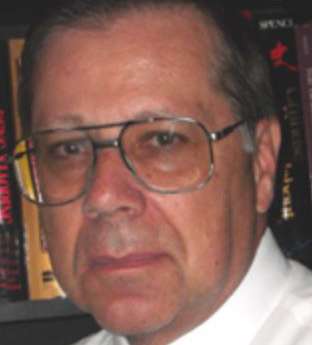
By JOHN RICHARD SCHROCK
We are now a few days past the 75th anniversary of the atomic bomb being dropped on Hiroshima and three days later on Nagasaki. These were the first and last uses of nuclear bombs in warfare—so far. Nuclear tests were conducted where 504 devices were exploded at 13 test sites, mostly by the U.S. and the U.S.S.R., yielding a total explosive power of 440 megatons. The memory of the bombs on Japan, and the real-time images of those many nuclear tests that were conducted up to 1980, have likely prevented the use of nuclear warfare ever since.
Yet there is now concern that as the remaining elderly survivors of the Nagasaki and Hiroshima bombings die, so will our revulsion to these horrific events. Indeed, the clock maintained by the Bulletin of Atomic Scientists has never been closer to doomsday.
Twenty five years ago, Walter Cronkite interviewed renowned nuclear scientist Harold Agnew who had worked on the original bomb at Alamagordo. Cronkite asked Agnew if he felt safer with the test ban treaty in place, during his broadcast of “Fifty Tears After the Bomb and Counting?”
Agnew’s answer caught Cronkite by surprise. He felt we were less secure because the generation of generals who had witnessed a nuclear bomb firsthand had all retired. Agnew felt we would be safer if all the world’s new generals were lined up to witness a real bomb test in their undershorts.
“Undershorts?”
Agnew went on to explain that only when you are face-to-face with a real thermonuclear explosion do you really appreciate the power of that distant inferno. In another interview, he elaborated: “...you don't know what heat is until you've seen the heat from a ten megaton, fifteen megaton hydrogen bomb. The most impressive thing about the heat is it doesn't stop, it just gets hotter and hotter and you start to really worry even though you're twenty some miles away....” Agnew believed that if generals felt the intensity of that distant inferno firsthand, they would never order a thermonuclear bombing. No audio-visuals, no modern “virtual reality” media, could ever replace the feel of that heat penetrating your body. But rookie generals whose only idea of an H-bomb was from comparisons to conventional weapons and viewing abstract videos made this a more dangerous world.
And therein lies the problem. Time wipes out the very experience base that allows us to have a reasonable and commonsense perspective.
This is the difference Agnew was pointing out. Learning is embedded in real life experiences. Today we know that our brain is stimulated by emotions and tells us: “This is real. This is happening now. Remember this!” And we do.
But print and pictures are soon forgotten. I read John Hersey’s “Hiroshima” when I was a high school student. A reader should have much empathy for the survivors he describes. But a book cannot convey the depth of horror that we should feel for this mode of warfare.
There is another aspect of warfare where it is important that older memories and attitudes be forgotten. Many atrocities were committed by Japan: the “Rape of Nanking” and the biological warfare from the Japanese Unit 731 that spread typhus and bubonic plague in China. Many of our oldest “greatest generation” who fought in the Pacific theater of war will never buy a “Jap” car because of their war experiences over 75 years ago. But today, many young students from China and Japan walk as friends across university campuses, when their grandparents never would. Our enemies in the past are now our friends.
The technology that ended World War II is now the greatest threat to the survival of mankind. Should we join Harold Agnew in his suggestion that we violate the test-ban treaty and line up the world’s generals—in their undershorts—to get an education in nuclear weapons? We must not.
The world would suffer from any return to a nuclear “test.” The isotopes would spread around the world. Radioactive Iodine-131 has a half-life of only 8 days, but concentrates in the thyroid and causes thyroid cancer. Radioactive strontium-90 and cesium-137 (with half-lives of 28.8 and 30.17 years) would again be spread worldwide and cause substantial increases in cancer for the rest of our lifetimes.
Civilization cannot survive the use of nuclear weapons or testing.
. . .
John Richard Schrock has trained biology teachers for more than 30 years in Kansas. He also has lectured at 27 universities in 20 trips to China. He holds the distinction of “Faculty Emeritus” at Emporia State University.





